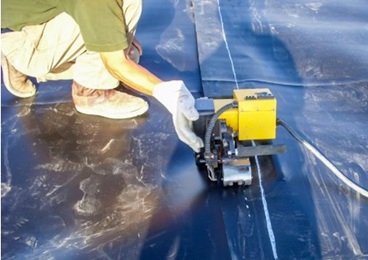 NATIONAL REPORT—Commercial ponds serve more than decorative purposes at hotels, resorts, and retreat centers; they anchor sustainability strategies that shape guest experiences and operational outcomes.
NATIONAL REPORT—Commercial ponds serve more than decorative purposes at hotels, resorts, and retreat centers; they anchor sustainability strategies that shape guest experiences and operational outcomes.
When liners fail, water systems destabilize, chemical treatments spread into soils, and surrounding habitats decline, leaving commercial properties exposed to financial and environmental liabilities. Liner repairs restore ecological balance, reduce long-term costs, and demonstrate a visible commitment to sustainable practices.
Conserving Water Resources
Large commercial ponds lose thousands of gallons every month when liners allow seepage, and those losses drive up utility costs while straining regional water supplies. Repairs close hidden gaps, preserve stored volumes, and reduce the constant need to pump or source additional water for irrigation and amenities. As a result, facilities in drought-prone areas maintain reliable pond levels without increasing their dependence on already stressed municipal systems.
A clear environmental benefit of repairing pond liners is the preservation of local water supplies that communities and businesses rely on together. Hotels and resorts that monitor water usage before and after liner restoration often see measurable reductions, which they can report in their corporate sustainability scorecards.
Reducing Chemical Runoff
Chemicals used to manage algae, balance pH levels, or enhance water clarity often accumulate in ponds, and leaks allow these substances to migrate into surrounding soils and waterways. Restored liners confine treatments within the intended system, which prevents fertilizers, clarifiers, or biocides from seeping into wetlands or groundwater reserves. Facility teams reduce exposure to compliance violations while protecting natural resources that support regional agriculture and drinking water supplies.
Another environmental benefit of repairing pond liners is the prevention of pollutant movement into rivers and aquifers that extend far beyond a single property. Facilities can integrate repair programs with best practices such as vegetated buffers and scheduled water testing to create stronger layers of defense against contamination. Moreover, combined efforts reinforce an image of proactive environmental stewardship that aligns with EPA expectations and corporate ESG standards.
Preserving Local Habitats
Stable ponds function as living ecosystems that support amphibians, birds, and aquatic life, which in turn attract guests who value natural surroundings. When water levels remain consistent after liner repairs, breeding cycles continue uninterrupted, vegetation along the edges thrives, and diverse species return to the property. Guests who experience healthy landscapes perceive a hotel or resort as more responsible and connected to its local environment.
Facilities can further enhance habitat value with features such as native shoreline plants, shallow ledges, and shaded refuges that complement liner repairs. Wildlife thrives when properties reduce artificial disruptions, and careful lighting strategies even extend ecological benefits into nighttime hours. Over time, restored habitats contribute to certifications like LEED or Green Key, which strengthen brand differentiation and appeal to eco-conscious travelers.
Cutting Waste from Replacements
Every liner replacement generates tons of synthetic material destined for landfills, and repairs significantly reduce that burden. Extending liner life also limits demand for new resin production, which cuts emissions from extraction, manufacturing, and long-distance transportation. Repairing pond liners effectively reduces waste output and greenhouse gas emissions across their operational footprint.
A structured program that includes annual inspections, spark testing, and prompt patching maximizes liner longevity and continued benefits. Teams can quantify avoided waste tonnage, calculate carbon savings, and communicate results in sustainability reporting frameworks recognized by investors.
Repairing pond liners represents a cost-saving measure and also a circular economic approach that demonstrates leadership in sustainable facility management. For lodging properties across the United States, partnering with specialized pond liner professionals transforms routine maintenance into a cornerstone of sustainable operations.







